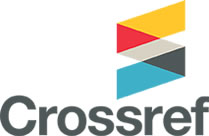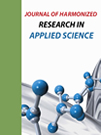Short Communication - (2022) Volume 10, Issue 3
HORMONE REPLACEMENT THERAPY IN CANCER TREATMENT
Chahainez Boualleg*Received: Aug 23, 2022, Manuscript No. JHRAS-22-78041; Editor assigned: Aug 26, 2022, Pre QC No. JHRAS-22-78041(PQ); Reviewed: Sep 09, 2022, QC No. JHRAS-22-78041; Revised: Sep 16, 2022, Manuscript No. JHRAS-22-78041(R); Published: Sep 23, 2022, DOI: 10.30876/2321-7456.22.10.001
Description
Hormone therapy is used to treat prostate and breast cancers. Hormone therapy is most often used along with other cancer treatments. The type of treatment that a person need depends up on the type of cancer. Hormone therapy blocks a person’s body’s ability to produce hormones or interferes with hormones produced in the body, it can cause unwanted side effects. The side effects have will depend on the type of hormone therapy a person receives and how that person’s body responds to it. People respond differently to the same treatment, so not everyone gets the same side effects. Some side effects also differ depend up on the gender. A person may take hormone therapy at home or may receive hormone therapy in a doctor’s office, clinic, or hospital [1].
Hormone therapy affects people in different ways. Depends up on the type of cancer, how advanced it is, the type of hormone therapy will be given. Doctors and nurses cannot know for sure how that person will feel during hormone therapy. Some cancers use hormones to grow or develop. This means that the cancer is either hormone sensitive or hormone dependent. Hormone therapy for cancer uses drugs to block or reduce the amount of hormones in the body and stop or slow the growth of cancer [2]. Hormone therapy either stops hormone production or prevents hormones from allowing cancer cells to grow and divide. Not all cancer cells work. Hormone-sensitive cancers include breast, prostate, and ovarian cancers. Also known as hormone therapy or endocrine therapy, this cancer treatment differs from menopausal Hormone Replacement Therapy (HRT), which prescribes additional hormones to relieve menopausal symptoms. Certain cancers rely on hormones to grow [3]. In such cases, hormone therapy can slow or stop its spread by blocking the body’s ability to produce these specific hormones or by altering the behavior of hormone receptors in the body.
Breast cancer and prostate cancer are the two most commonly treated types with hormone therapy. Most breast cancers have estrogen receptors, progesterone receptors, or both. In contrast, prostate cancer requires the growth and spread of testosterone and other male sex hormones such as dihydrotestosterone. Hormone therapy helps make these hormones less available to growing cancer cells. Hormone therapy is available as pills, injections, or through surgery to remove the hormone-producing organs like the ovaries in women and the testicles in men. It is usually recommended to be used in combination with other cancer treatments [4]. If hormone therapy is part of treatment plan, a person can discuss potential risks and side effects with their health care team to understand what to expect and take steps to mitigate them. Cancer can be considered an age-related disease because the incidence of most cancers increases with age, especially after middle age. One of the important key to healthy and successful aging is reducing the incidence of severe disability caused by age-related diseases. One of the important causes of anti-aging is hormone replacement therapy, which is used to treat agerelated symptoms caused by a deficiency of female sex hormones. However, many studies have questioned the link between hormone replacement therapy and cancer recurrence. Hormone replacement therapy can affect both quality of life and survival in menopausal women. Many clinicians are reluctant to prescribe HRT to gynaecologic cancer patients for fear of recurrence. It will be for a short period of time [5].
References
- Hickey M, Elliott J, Davison SL. Hormone replacement therapy. Bmj. 2012;344.
[Google Scholar] [PubMed]
- Lobo RA. Hormone-replacement therapy: Current thinking. Nat Rev Endocrin. 2017;13(4):220-231. [Crossref]
- Barrett-Connor E, Grady D. Hormone replacement therapy, heart disease, and other considerations. Annual Rev Pub Health. 1998;19(1):55-72.
[Crossref] [Google Scholar] [PubMed]
- Nelson HD, Humphrey LL, Nygren P, Teutsch SM, Allan JD. Postmenopausal hormone replacement therapy: Scientific review. Jama. 2002;288(7):872-881.
- Manson JE, Martin KA. Postmenopausal hormone-replacement therapy. New Eng J Med. 2001;345(1):34-40.
[Crossref]










